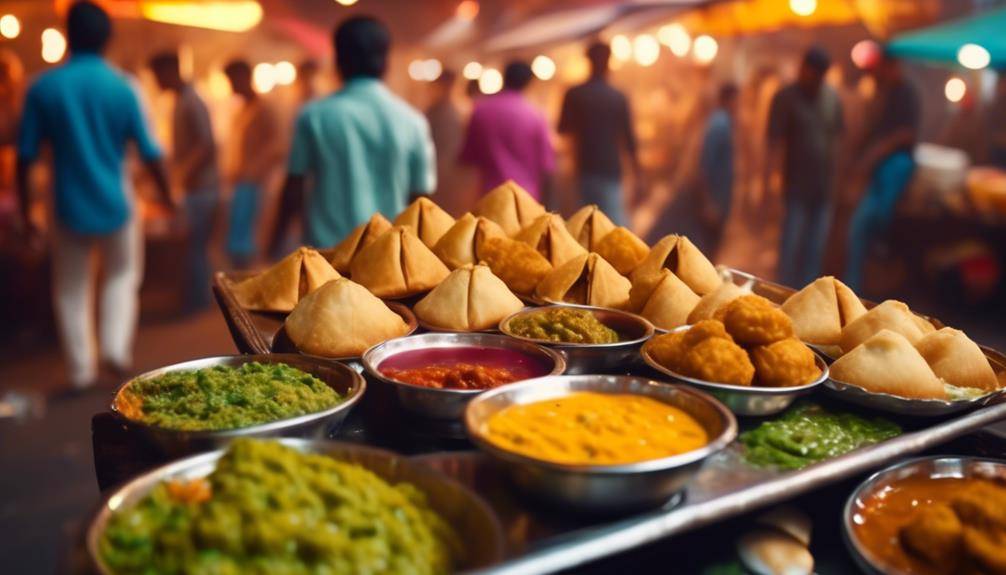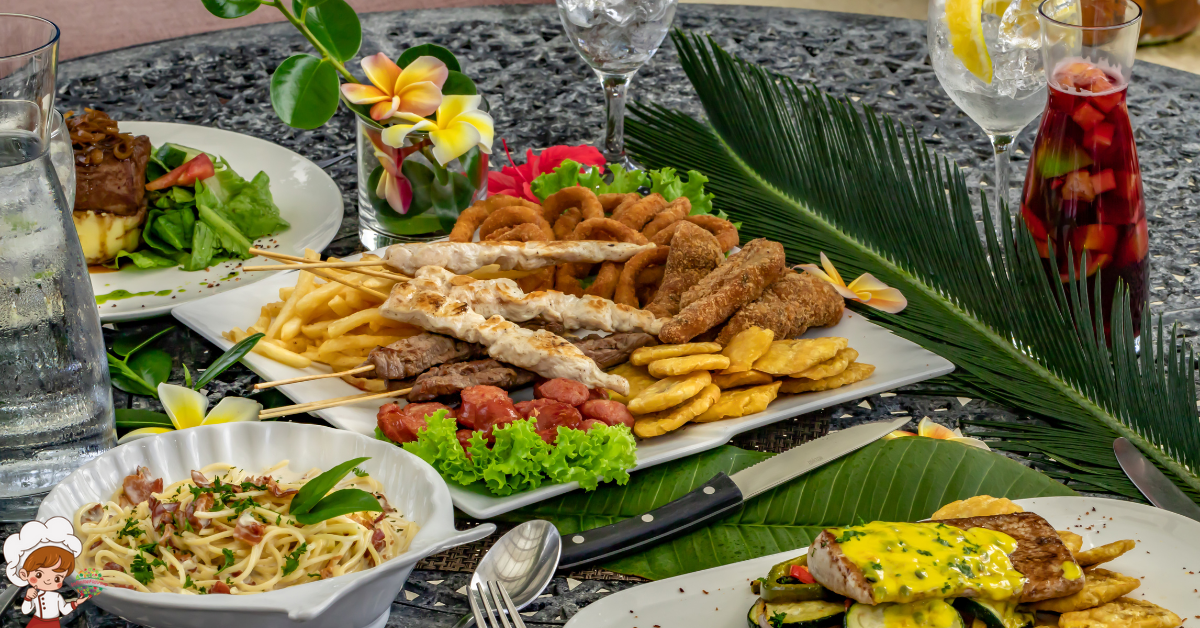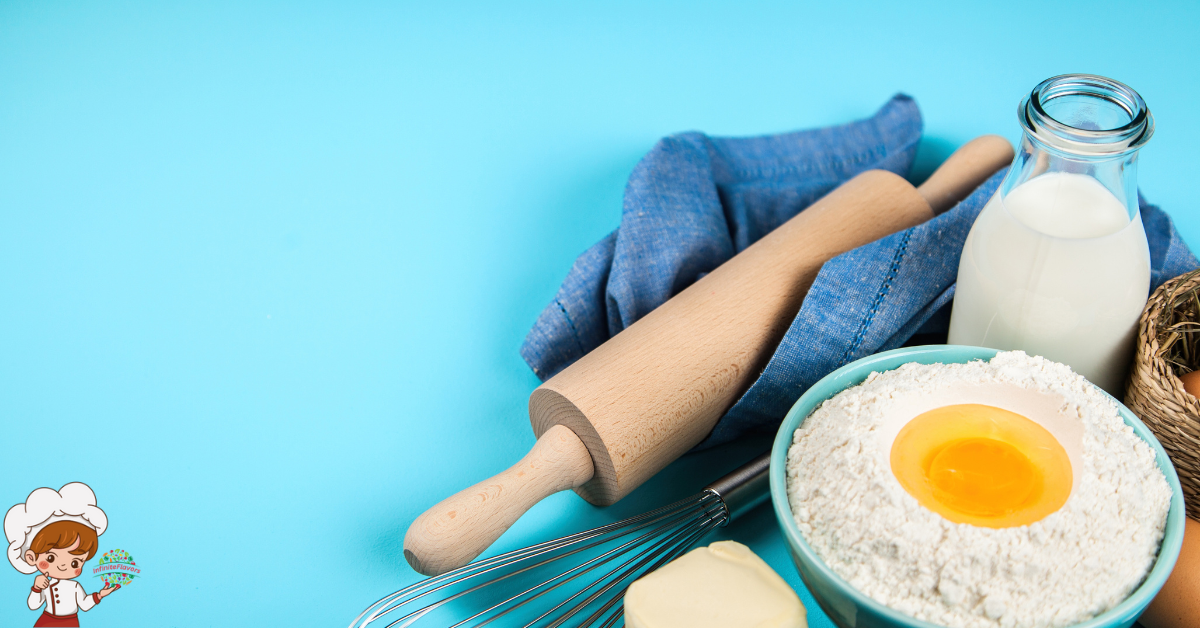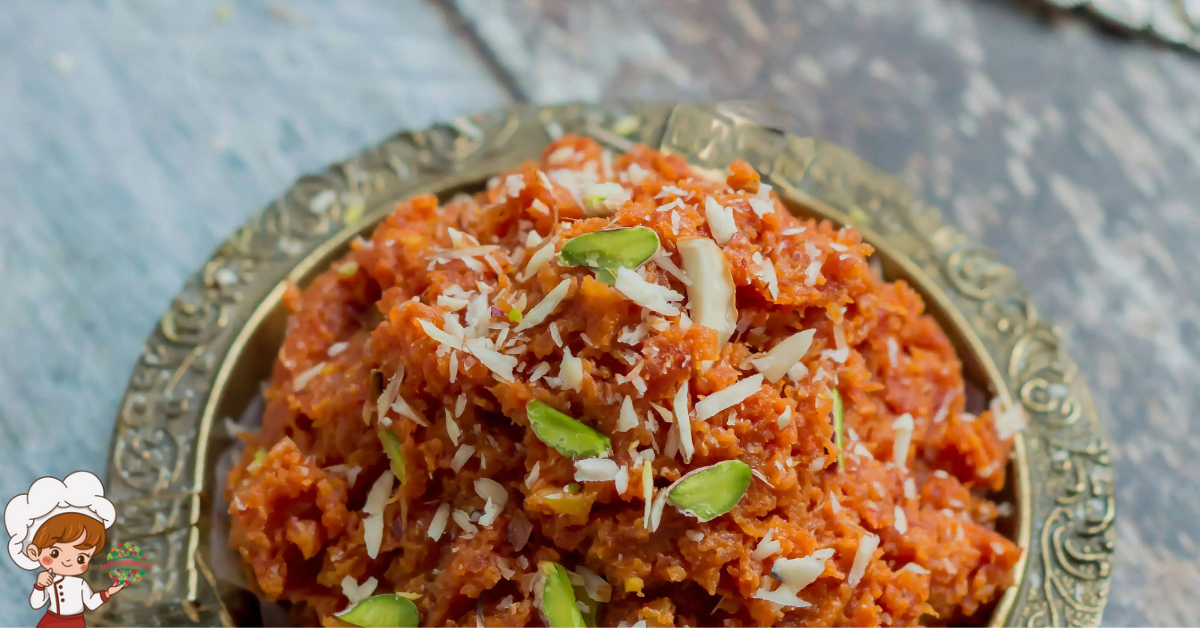The Best Traditional Peruvian Food Recipes
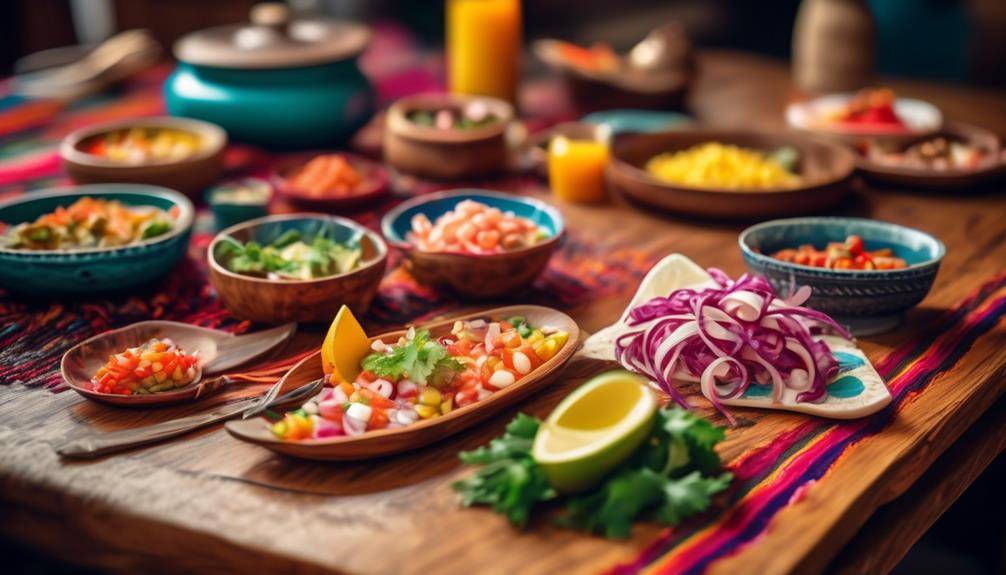
The Best Traditional Peruvian Food Recipes; If you’re looking to explore the culinary wonders of Peru, you’ll find a plethora of traditional food recipes that will surely tantalize your taste buds. From the iconic ceviche bursting with flavors of the sea to the fusion of beef and vegetables in lomo saltado, there is something for everyone to savor. But that’s just the beginning. With grilled Peruvian skewers, creamy and spicy chicken stew, and layers of potatoes in a cheesy sauce, the possibilities are endless. So, why not embark on a culinary journey through the vibrant flavors of Peru and discover the delights that await?
Ceviche: Peru’s Iconic Seafood Dish
Ceviche, Peru’s iconic seafood dish, is a tangy and refreshing culinary masterpiece that showcases the vibrant flavors of the ocean. This dish has a long history and has evolved over time, resulting in various ceviche variations. The history of ceviche can be traced back to ancient times when the indigenous people of Peru used a fermented juice called “tumbo” to marinate their fish and seafood. This technique was later adapted by the Spanish conquistadors, who introduced the use of citrus fruits such as lime to the marinade, giving ceviche its characteristic tanginess.
Today, there are countless variations of ceviche found throughout Peru. In the coastal regions, where fresh seafood is abundant, ceviche is often made with white fish like sea bass or flounder, marinated in lime juice and seasoned with salt, chili peppers, and cilantro. In the highlands, where seafood is not as readily available, ceviche is made with freshwater fish or even mushrooms, marinated in lemon juice and seasoned with herbs like huacatay and rocoto peppers.
The popularity of ceviche has spread beyond Peru, and each region has put its own spin on this beloved dish. In Mexico, ceviche is often made with shrimp and served with avocado and tortilla chips. In Ecuador, ceviche is made with shrimp, squid, or octopus and served with popcorn and plantain chips.
Regardless of the variation, ceviche is a dish that celebrates the freshness and natural flavors of the ocean. Its tangy and refreshing taste, combined with the vibrant colors and textures of the ingredients, make it a truly delightful dish that has stood the test of time.
Lomo Saltado: A Delicious Fusion of Beef and Vegetables
Now let’s explore the key points about Lomo Saltado, a mouthwatering dish that combines tender beef and flavorful vegetables. First, we’ll look at the essential ingredients needed to create this delectable fusion. Then, we’ll delve into the step-by-step cooking process, ensuring you can easily recreate this dish at home. Finally, we’ll discuss some serving suggestions to enhance your Lomo Saltado experience. Get ready to savor the perfect balance of meat and veggies in this iconic Peruvian recipe.
Ingredients for Lomo Saltado
To create the delicious fusion of beef and vegetables known as Lomo Saltado, gather the necessary ingredients. Here is a list of key ingredients that will bring this dish to life:
- Beef: Tender strips of beef are the star of this dish. Choose a high-quality cut like sirloin or tenderloin for the best results.
- Onions: Sliced onions add a sweet and savory flavor to the dish, complementing the beef perfectly.
- Tomatoes: Ripe tomatoes bring a burst of freshness and acidity to balance the richness of the beef.
- Potatoes: Crispy French fries are a must in Lomo Saltado. They provide a delightful texture contrast to the tender meat and vegetables.
These ingredients, when combined with the right cooking techniques, create a mouthwatering dish that is loved by many. While the traditional recipe calls for these ingredients, there are also variations of Lomo Saltado that incorporate additional vegetables or spices to suit different tastes. So go ahead and gather these ingredients, and get ready to experience the tantalizing flavors of Lomo Saltado.
Cooking Process for Lomo Saltado
After gathering the key ingredients for Lomo Saltado, it is time to dive into the cooking process and learn how to create this delectable fusion of beef and vegetables. The cooking techniques used in making Lomo Saltado are crucial in achieving the perfect balance of flavors and textures.
To begin, heat a large skillet over high heat and add oil. Once the oil is hot, add the beef strips and cook until browned. Remove the beef from the skillet and set it aside. In the same skillet, add onions, tomatoes, and peppers, and cook until they are slightly softened. Then, return the beef to the skillet and toss everything together. The variations of Lomo Saltado are endless, with some recipes adding soy sauce or vinegar for an extra tangy flavor. Experiment with different vegetables and seasonings to create your own unique twist on this traditional Peruvian dish.
Serving Suggestions for Lomo Saltado
For an exquisite presentation of Lomo Saltado, consider serving it alongside a bed of fluffy white rice and garnishing with fresh cilantro. This classic Peruvian dish pairs perfectly with the simplicity and neutrality of white rice, allowing the bold flavors of the beef and vegetables to shine through. The cilantro adds a refreshing touch, enhancing the overall aroma and taste of the dish. To further elevate your Lomo Saltado experience, here are some serving suggestions that will excite your taste buds:
- Top your Lomo Saltado with a drizzle of spicy aji amarillo sauce for an extra kick of heat.
- Serve it with a side of crispy yuca fries, adding a delightful crunch to each bite.
- Pair it with a glass of refreshing Chicha Morada, a traditional Peruvian purple corn drink.
- For a lighter option, serve Lomo Saltado over a bed of mixed greens, creating a vibrant and nutritious salad.
These flavor variations and serving suggestions will take your Lomo Saltado to the next level, making it a memorable and satisfying meal.
Anticuchos: Grilled Peruvian Skewers With a Twist
Get ready to take your taste buds on a flavorful journey with Anticuchos, grilled Peruvian skewers with a twist. To ensure maximum flavor, marinate your skewers in a mouthwatering blend of spices and ingredients. When it comes to grilling perfection, remember to cook the skewers over high heat, rotating them for even cooking and that irresistible char. What sets Anticuchos apart is the unique ingredient combinations, like tender beef or chicken paired with vibrant vegetables or exotic fruits, creating a truly unforgettable culinary experience.
Marinade for Maximum Flavor
To maximize the flavor of your Anticuchos: Grilled Peruvian Skewers With a Twist, consider using a marinade that will infuse the meat with a burst of deliciousness. A well-crafted marinade can take your skewers to the next level, elevating the taste and aroma of the dish. Here are some marinade techniques and flavor enhancers that will make your Anticuchos truly unforgettable:
- Citrus Zest: Adding a touch of citrus zest, such as lime or orange, to your marinade can provide a refreshing and tangy flavor profile.
- Aji Amarillo: This Peruvian chili pepper is known for its vibrant yellow color and unique fruity taste. Incorporating it into your marinade will add a delightful kick.
- Cumin and Paprika: These spices bring warmth and depth to the marinade, enhancing the overall flavor of the meat.
- Garlic and Onion: These aromatic ingredients not only infuse the meat with a savory taste but also add a comforting aroma to the dish.
Grilling Perfection Tips
For achieving grilling perfection with your Anticuchos: Grilled Peruvian Skewers With a Twist, follow these detailed and analytical tips to elevate your cooking skills and create a flavorful dish that will leave a lasting impression. When it comes to grilling techniques, it is essential to preheat your grill to ensure even cooking and to avoid sticking. Brushing the skewers with oil before grilling will prevent the meat from drying out and sticking to the grill.
Additionally, rotating the skewers frequently will result in a perfectly charred exterior and juicy interior. To enhance the flavor profiles of your Anticuchos, consider marinating the meat overnight or for a few hours before grilling. This will infuse the meat with delicious Peruvian spices and create a mouthwatering blend of flavors. By following these grilling perfection tips, you’ll be able to impress your guests with tender and flavorful Anticuchos.
Unique Ingredient Combinations
To create unique and tantalizing flavor combinations for your Anticuchos: Grilled Peruvian Skewers With a Twist, experiment with unexpected ingredient pairings that will take your dish to new heights of culinary creativity. By combining traditional Peruvian cooking techniques with unconventional ingredients, you can create extraordinary flavor profiles that will surprise and delight your taste buds. Here are four exciting ingredient combinations to consider:
- Sweet and Savory: Marinate your skewers in a mixture of soy sauce, honey, and garlic for a harmonious blend of flavors.
- Spicy and Fruity: Add a kick to your skewers by incorporating a spicy chili paste and balancing it with the sweetness of ripe pineapple.
- Tangy and Herbaceous: Infuse your skewers with brightness by using a marinade of lime juice, cilantro, and vinegar.
- Smoky and Creamy: Elevate your skewers with a smoky chipotle aioli, creating a creamy and spicy contrast to the grilled meat.
Aji De Gallina: Creamy and Spicy Chicken Stew
Aji De Gallina, a creamy and spicy chicken stew, is a delectable Peruvian dish that tantalizes the taste buds with its rich flavors and comforting textures. This traditional Peruvian recipe has various variations, each adding their own twist to the dish. Some variations include the addition of walnuts, cheese, or even yellow chili peppers for an extra kick of spice. Despite the different versions, the essence of Aji De Gallina remains the same – a hearty and flavorful chicken stew.
To prepare Aji De Gallina, start by cooking chicken breasts in a flavorful broth until they are tender and easily shredded. Then, the chicken is mixed with a rich sauce made from a blend of yellow chili peppers, onions, garlic, and bread soaked in milk. This mixture is cooked until it thickens into a creamy sauce that coats the shredded chicken. The result is a velvety stew that is both spicy and creamy, with a hint of sweetness from the yellow chili peppers.
Aji De Gallina is often served with a side of rice, which helps to balance out the spiciness of the dish. The creamy stew is also commonly accompanied by boiled potatoes, which add a hearty element to the meal. Other popular side dishes that pair well with Aji De Gallina include avocado slices, hard-boiled eggs, and olives. These additions not only enhance the flavors of the dish but also provide a refreshing contrast to the richness of the stew.
Papa a La Huancaina: Potatoes in a Creamy Cheese Sauce
Papa a La Huancaina, a beloved Peruvian dish, showcases tender potatoes smothered in a creamy cheese sauce that is both indulgent and flavorful. This traditional Peruvian side dish has variations and regional influences that make it a unique and versatile addition to any meal.
- Creamy and rich: The creamy cheese sauce, made with aji amarillo chili peppers, queso fresco, evaporated milk, and crackers, creates a luscious and velvety texture that coats each potato perfectly. The combination of flavors from the spicy aji amarillo and the salty cheese creates a truly indulgent experience.
- Regional influences: While Papa a La Huancaina is enjoyed throughout Peru, it is particularly popular in the city of Huancayo. In this region, the dish is often served with boiled eggs and olives, adding extra layers of flavor and texture to the already delicious combination of potatoes and sauce.
- Versatile and customizable: Although the traditional recipe calls for boiled potatoes, you can experiment with different types of potatoes, such as purple or sweet potatoes, to add a unique twist to the dish. Additionally, some variations include adding shrimp, chicken, or even avocado slices on top, giving it a protein-packed upgrade.
- Celebrating tradition: Papa a La Huancaina is not only a delicious dish but also a representation of the rich culinary heritage of Peru. Its roots can be traced back to the indigenous Quechua people, who used potatoes as a staple in their diet. Today, this dish is still prepared with love and care, honoring the traditions passed down through generations.
Rocoto Relleno: Stuffed Spicy Peppers With a Kick
With its fiery flavors and tantalizing heat, Rocoto Relleno brings a burst of spice to the Peruvian culinary scene. This traditional dish features stuffed spicy peppers that are known for their kick and bold taste. Rocoto Relleno is a popular dish in Peru and is often served as an appetizer or main course. The dish is made by hollowing out rocoto peppers, which are native to Peru and known for their spicy flavor. The peppers are then stuffed with a mixture of ground beef or pork, onions, garlic, and traditional Peruvian spices. The stuffed peppers are then baked until the meat is cooked through and the peppers are tender.
There are several variations of Rocoto Relleno, each with its own unique twist. Some variations include adding diced vegetables like carrots and peas to the stuffing mixture, while others incorporate ingredients like olives or raisins for an added burst of flavor. The level of spiciness can also be adjusted by either removing the seeds and veins from the peppers or keeping them intact.
Traditional Peruvian spices play a crucial role in the flavor profile of Rocoto Relleno. A common spice used in this dish is aji panca, a Peruvian red pepper that adds a smoky and slightly sweet flavor. Other spices like cumin, oregano, and garlic powder are also commonly used to enhance the overall taste of the dish.
Rocoto Relleno is a true representation of Peruvian cuisine, with its bold flavors and use of traditional spices. Whether you prefer a mild or fiery version, this dish is sure to leave your taste buds tingling and craving more.
Pollo a La Brasa: Peruvian-Style Rotisserie Chicken
If you’re ready to experience another mouthwatering dish from the Peruvian culinary repertoire, get ready to indulge in the delectable flavors of Pollo a La Brasa: Peruvian-Style Rotisserie Chicken. This iconic dish is known for its perfectly seasoned and juicy chicken, achieved through a combination of marinating secrets and grilling techniques.
To truly appreciate the mouthwatering flavors of Pollo a La Brasa, here are some key secrets to marinating the chicken:
- Use a blend of aromatic spices: The marinade typically includes a combination of garlic, cumin, paprika, oregano, and aji panca, a mild Peruvian chili pepper. These spices infuse the chicken with a rich and fragrant flavor.
- Incorporate citrus juices: Lime and orange juices are commonly used to marinate the chicken. The acidity from these citrus fruits not only adds a refreshing tang but also helps to tenderize the meat.
- Let it marinate overnight: For the best results, allow the chicken to marinate overnight. This allows the flavors to penetrate the meat, resulting in a more flavorful and succulent dish.
Now that the chicken is marinated to perfection, it’s time to master the grilling techniques that make Pollo a La Brasa so unique:
- Slow and even cooking: The chicken is typically cooked on a rotisserie grill, which allows for slow and even cooking. This method ensures that the meat remains tender and juicy, while the skin becomes crispy and golden brown.
- Charcoal for smoky flavor: Traditional Peruvian-style rotisserie chicken is cooked over charcoal, which imparts a smoky flavor to the meat. This adds another layer of complexity to the already delicious flavors.
- Basting for moisture: Throughout the cooking process, the chicken is basted with the marinade or a special sauce. This not only adds moisture but also enhances the flavors.
Causa: Layers of Potatoes and Tasty Fillings
When it comes to Causa, a traditional Peruvian dish, the star of the show is the layers of potatoes and tasty fillings. This dish is known for its unique presentation, with each layer carefully stacked and filled with delicious ingredients such as avocado, shrimp, or chicken salad. The combination of the fluffy potatoes and flavorful fillings creates a harmonious balance of textures and flavors that is sure to impress any food lover.
Potato Layers and Fillings
To create the delicious layers of potatoes and tasty fillings in Causa, you can follow these step-by-step instructions.
- First, select from a variety of potatoes available, such as the yellow, white, or purple ones. Each type brings a unique flavor and texture to the dish, adding depth to the layers.
- Boil the potatoes until they are tender and easily mashed. This ensures a smooth and creamy consistency for the layers.
- Once the potatoes are cooked, peel and mash them with a fork or a potato masher. Add a touch of lime juice, a pinch of salt, and a drizzle of olive oil to enhance the flavor.
- Layer the mashed potatoes with your choice of fillings, such as avocado, chicken, seafood, or even vegetarian options like roasted vegetables. The combination of flavors and textures creates a delightful culinary experience.
Traditional Peruvian Dish
Causa, a traditional Peruvian dish, tantalizes the taste buds with its layers of creamy mashed potatoes and flavorful fillings. This dish showcases the mastery of Peruvian cooking techniques, as it combines simple ingredients to create a complex and satisfying flavor profile. The cultural significance of traditional Peruvian dishes like causa lies in their ability to preserve the country’s culinary heritage and tell the story of its diverse cultural influences.
The layers of potatoes in causa symbolize the unity of different cultures coming together to create something unique and delicious. Each bite of causa is a journey through the rich history of Peru, with its indigenous roots, Spanish influences, and the flavors brought by immigrants from different parts of the world. Causa is not just a dish; it is a representation of Peruvian identity and pride.
Chupe De Camarones: Hearty Shrimp Chowder
Indulge in the rich flavors of Chupe De Camarones, a hearty shrimp chowder that will warm your soul and tantalize your taste buds. This traditional Peruvian dish is a true culinary delight, known for its creamy texture and robust seafood flavors. Here are some key points to know about Chupe De Camarones:
- Variations and Regional Specialties:
- Chupe De Camarones comes in various regional variations across Peru. In the northern regions, it is often prepared with a tomato-based broth, while in the southern regions, it is commonly made with a milk or cream base. Each variation adds its own unique twist, resulting in a diverse culinary experience.
- Traditional Accompaniments:
- A steaming bowl of Chupe De Camarones is best enjoyed with traditional accompaniments. Slices of crusty bread are perfect for soaking up the flavorful broth, while a side of Peruvian white rice adds a touch of heartiness to the meal. Don’t forget to top it off with a sprinkle of chopped cilantro for a burst of freshness.
- Sensory Delights:
- As you take your first spoonful, the aroma of the chowder will transport you to the coastal regions of Peru. The creamy broth, infused with the flavors of shrimp, onions, garlic, and spices, will envelop your palate. The tender shrimp, along with chunks of potatoes and corn, create a delightful medley of textures that will leave you craving for more.
- Cultural Significance:
- Chupe De Camarones is not just a delicious dish, but also holds cultural significance in Peru. It is often enjoyed during special occasions and celebrations, bringing families and friends together around the dining table. Its comforting and satisfying nature makes it a beloved staple in Peruvian cuisine.
With its rich history and exquisite flavors, Chupe De Camarones is a dish that embodies the essence of Peruvian cuisine. So why not treat yourself to this indulgent chowder and experience the warmth and joy it brings?
Tacu Tacu: Rice and Bean Pancakes With a Crunch
If you’re looking to explore the diverse and flavorful world of Peruvian cuisine, one dish that you must try is Tacu Tacu: Rice and Bean Pancakes With a Crunch. Tacu Tacu is a popular traditional dish in Peru, known for its crispy texture variations and regional variations in ingredients.
The main ingredients of Tacu Tacu are rice and beans, which are combined and then cooked to create a thick mixture. This mixture is then formed into pancakes and fried until they develop a golden brown crust. The result is a dish that is both crispy on the outside and soft on the inside.
While the basic recipe for Tacu Tacu remains the same, there are regional variations in the ingredients used. For example, in the coastal regions of Peru, seafood such as shrimp or fish may be added to the mixture, giving it a unique flavor. In the mountainous regions, ingredients like sausage or beef may be used instead.
The crispy texture variations of Tacu Tacu are achieved by adjusting the cooking time and temperature. Some people prefer their Tacu Tacu to be lightly crispy, while others prefer a more pronounced crunch. The choice is entirely up to personal preference.
Whether you enjoy it as a main course or as a side dish, Tacu Tacu is a delightful addition to any Peruvian meal. Its crispy texture and regional variations in ingredients make it a versatile and exciting dish to explore. So, the next time you’re in Peru, be sure to try Tacu Tacu and experience the flavors of this traditional Peruvian delight.
Suspiro Limeño: A Sweet and Creamy Peruvian Dessert
To indulge in the delectable flavors of Peruvian cuisine, look no further than Suspiro Limeño, a sweet and creamy dessert that will leave you craving for more. This traditional Peruvian dessert is a true delight for those with a sweet tooth. The name “Suspiro Limeño” translates to “Limeñan Sigh,” and it is said to have originated in the coastal city of Lima. Here are four reasons why you should try this heavenly dessert:
- Creamy and velvety texture: Suspiro Limeño is known for its smooth and luscious texture that melts in your mouth. The combination of condensed milk and egg yolks creates a rich and creamy custard base, while the meringue topping adds a light and airy element to the dessert.
- Sweet and caramel-like flavor: This dessert is all about sweetness. The custard is flavored with vanilla and spiked with a hint of aromatic port wine, giving it a unique and indulgent taste. The meringue topping is lightly torched, adding a caramelized flavor to the dessert.
- Perfect balance of flavors: Suspiro Limeño strikes the perfect balance between sweetness and richness. The creamy custard is complemented by the slightly tangy meringue, creating a harmonious blend of flavors that will satisfy your dessert cravings.
- Cultural significance: Suspiro Limeño is not just a dessert; it is a symbol of Peruvian culinary heritage. Its origins can be traced back to the 19th century, making it a traditional favorite among locals and visitors alike. By trying this dessert, you are immersing yourself in the rich history and culture of Peru.
Frequently Asked Questions: The Best Traditional Peruvian Food Recipes
What Are the Main Ingredients Used in Ceviche?
The main ingredients used in ceviche are fresh fish or seafood, lime or lemon juice, onions, and cilantro. Enjoy the health benefits of ceviche, such as high protein content and vitamin C. Explore different variations of ceviche recipes for a delightful culinary experience.
How Is Lomo Saltado Different From Other Beef Dishes in Peruvian Cuisine?
Lomo Saltado stands out among other beef dishes in Peruvian cuisine due to its unique combination of tender beef strips, onions, tomatoes, and fries. The stir-fry technique gives it a distinct flavor and texture that sets it apart.
What Is the Traditional Twist in Anticuchos That Sets Them Apart From Regular Grilled Skewers?
The traditional twist in anticuchos that sets them apart from regular grilled skewers is the marinade made with aji panca, ancho chili, and vinegar. This unique combination of flavors adds depth and richness to the dish, creating a distinct taste that is quintessentially Peruvian.
How Spicy Is Aji De Gallina, and Can the Level of Spiciness Be Adjusted?
You can adjust the spiciness level of aji de gallina to your liking. The dish is traditionally made with aji amarillo peppers, which give it a medium level of heat, but you can add more or less depending on your preference.
Is Papa a La Huancaina Typically Served as an Appetizer or a Main Dish?
“Papa a la huancaina can be served as either an appetizer or a main dish, depending on your preference. It is a traditional Peruvian dish made with boiled potatoes smothered in a creamy and spicy cheese sauce.”
Conclusion
In conclusion, traditional Peruvian food recipes offer a delightful blend of flavors, textures, and cultural influences. From the refreshing ceviche and the savory lomo saltado to the unique anticuchos and the rich aji de gallina, Peruvian cuisine never fails to impress. The creamy papa a la huancaina, the layers of causa, and the hearty chupe de camarones are also worth exploring. And for a sweet ending, the suspiro limeño provides a perfect balance of sweetness and creaminess. These traditional dishes truly capture the essence of Peruvian gastronomy.



